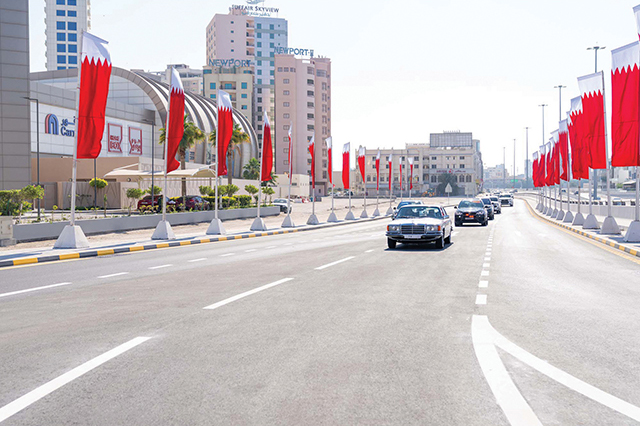Vital roadworks set to ease traffic congestion
01 January 2024
With work drawing to a close on the important arterial road development, Al-Fateh Highway upgrade, motorists in Bahrain eagerly await the flagging off of yet another vital road link in the capital – known variously as the North Manama Highway, the fourth Manama-Muharraq Crossing and the Busaiteen Link.
Tenders for the latest package - the fourth – of the North Manama Highway were launched in November by the Works Ministry and this will see a fourth bridge being built between Muharraq and the capital Manama.
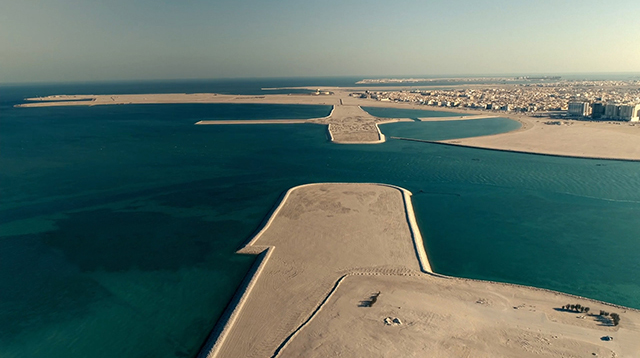 |
|
The signature bridge (right) forms a key component of the North Manama Highway that will facilitate traffic flow in the capital and link it with the Busaiteen area of Muharraq. |
The project scope includes development of Busaiteen Link (Junctions 4 to Junction 5), a signature bridge and related approach ramps, a loop road bridge connecting the new Busaiteen Link to Phase One of the existing North Manama Causeway, according to Bahrain Tender Board. The deadline for submitting the tenders has been set at February 4, 2024.
The strategic project is one of the major infrastructure schemes being financed by the Saudi Fund for Development (SFD). Reclamation work on the project was launched in 2019, with the first and second phases having being completed in early 2021 by Netherlands-headquartered Boskalis.
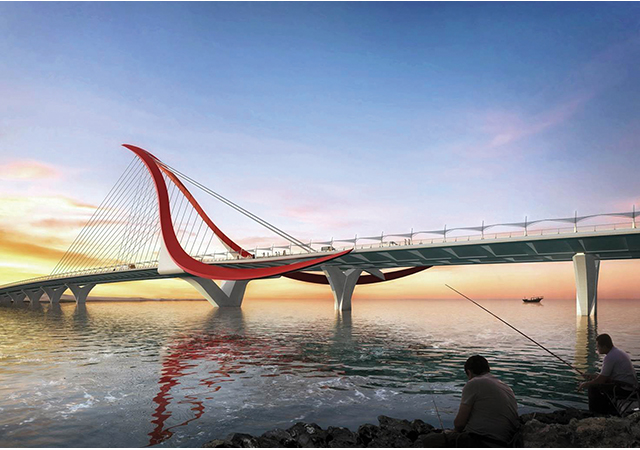 |
|
The signature bridge forms a key component of the North Manama Highway that will facilitate traffic flow in the capital and link it with the Busaiteen area of Muharraq. |
The 550-m signature bridge, suspended 93 m above sea level, will be a part of the 7.8-km-long North Muharraq Highway project which also includes the 4.2-km-long Muharraq ring road. It will connect north Busaiteen and Bahrain Bay.
Boskalis’ work involved the construction of a large sand causeway for a 5-km-long, six-lane motorway. During the first phase, Boskalis had constructed a 3-km-long embankment. As well as dredging, Phase Two included revetment work. In addition to environmental protection and safety, there was a strong emphasis in the project on community support and stakeholder management. according to Boskalis’ website.
To improve the flow of traffic between the districts of Manama and Muharraq, it was decided to build a road in the sea. Boskalis’ job was to construct a large sand embankment for this road, it added.
Al-Fateh Highway
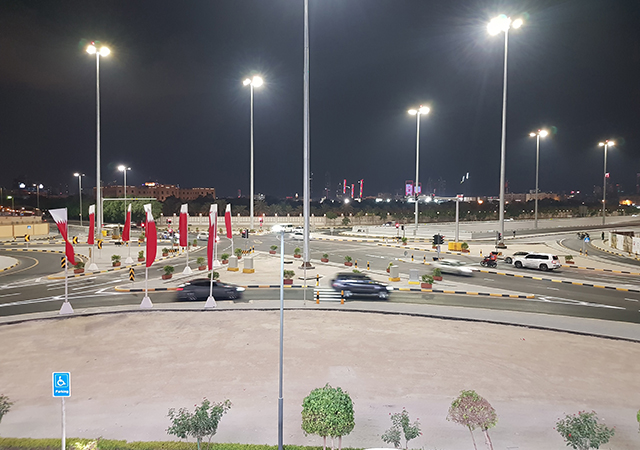 |
|
The BD40.5-million project aims to ease traffic flow along the Al-Fateh Highway network. |
Meanwhile, work is in the final stages on the Al Fateh Highway Upgrade project, which marked its official opening last month.
The BD40.5-million ($106.75 million) project, which is financed by the SFD through the GCC Fund, will play a key role in reducing traffic congestion, and alleviating the flow of traffic along the Al-Fateh Highway network.
The project will boost the road’s capacity by 61 per cent to handle around 140,000 vehicles per day. It extends from Sheikh Hamad Bridge in the north to Port Salman Interchange in the south, with a length of more than 3 km, and includes providing smooth access to the areas of Juffair and Gudaibiya, in addition to the older areas of Juffair, Al Ghuraifa and Umm Al Hasam.
The main works include widening Al-Fateh Highway to four lanes in each direction and involves:
• Constructing a 595-m-long underpass with three lanes in each direction at the intersection of Al-Fateh Highway with Awal Street and Bani Otba Street (the intersection of Al-Fateh Mosque) to move traffic freely between north and south along Al-Fateh street, in addition to an intersection managed by traffic lights at ground level above the underpass. It also includes provision of a free turnaround in both directions and exits to the Juffair and Adliya areas.
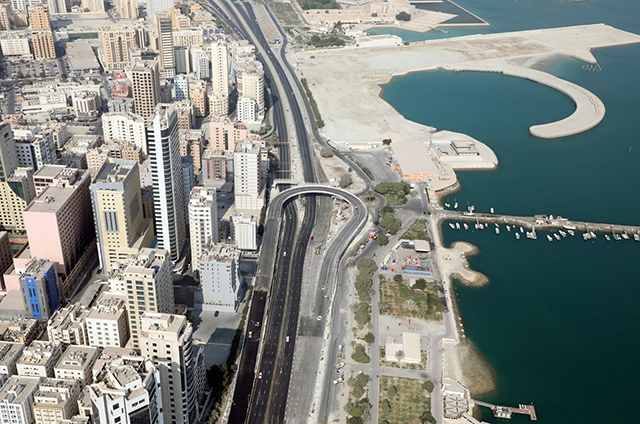 |
|
The Al-Fateh U-turn flyover was completed in December 2022. |
• Construction of a 367-m-long, one-way flyover bridge with two lanes to turn left onto Prince Saud Al-Faisal Street towards Al-Fateh suburb, which would provide free movement to traffic heading to Al-Fateh suburb without impacting the main traffic on Al-Fateh Highway.
• Providing a 126.5-m-long U-turn bridge with two lanes near the entrance to Al-Fateh Corniche for northbound traffic. This bridge mainly serves traffic flowing from Juffair via Prince Saud Al-Faisal Street to Al-Fateh Highway heading south towards Salman Port, in addition to traffic heading southwest to Sheikh Daij Street. This bridge is believed to be the first of its kind in Bahrain that was constructed as an overhead bridge for reverse circulation only.
The average volume of traffic on Al-Fateh Highway before the start of the project was 87,000 vehicles per day. This is expected to rise to 138,000 vehicles per day in 2030. The average speed of vehicles on the highway before the development works was 40 km/h, which will rise to 55 km/h, an increase of 38 per cent. The maximum speed on the street will be 80 km/h.
In the future, Al Fateh Highway will incorporate one of the main lines of the Bahrain Metro, which will be implemented by the Ministry of Transport and Telecommunication.
The project is part of the Ministry of Works strategy to establish north-south and west-east ring roads in Bahrain. The plan includes the construction of the Manama Ring Road, in order to facilitate the flow of traffic and reduce congestion on the road network.
The project also aims to provide traffic solutions for the Bahrain Bay area and the Bahrain Financial Harbour across the North Manama Bridge, which will relieve pressure and congestion on King Faisal Highway, and then to the Al-Farouq Intersection and Sheikh Khalifa Bin Salman Highway link with Sheikh Isa Bin Salman Highway.
- Paths to prosperity
- Bahrain projects at a glance
- Vital roadworks set to ease traffic congestion
- Lofty homes at Bahrain Bay
- Areen to emerge as a new township
- Work begins on Bahrain Marina development
- Paschal enhances contractor portfolio


